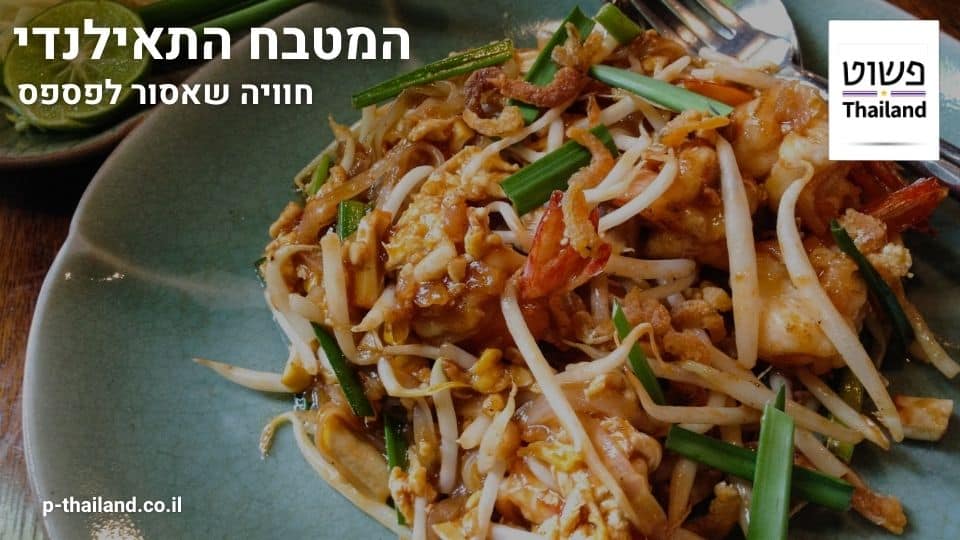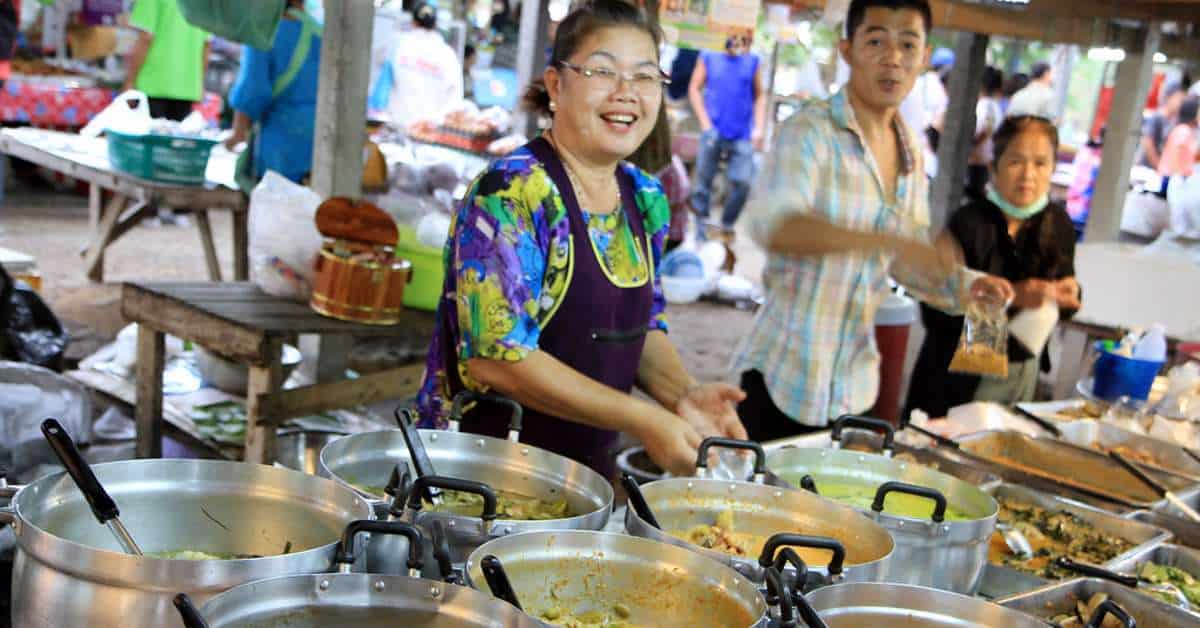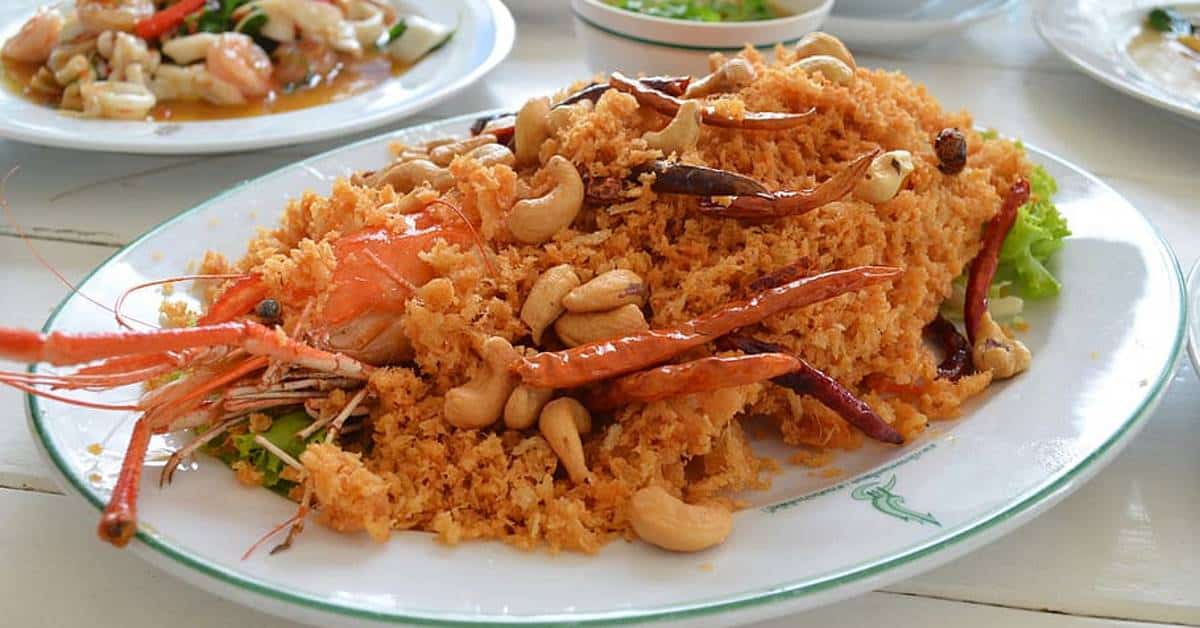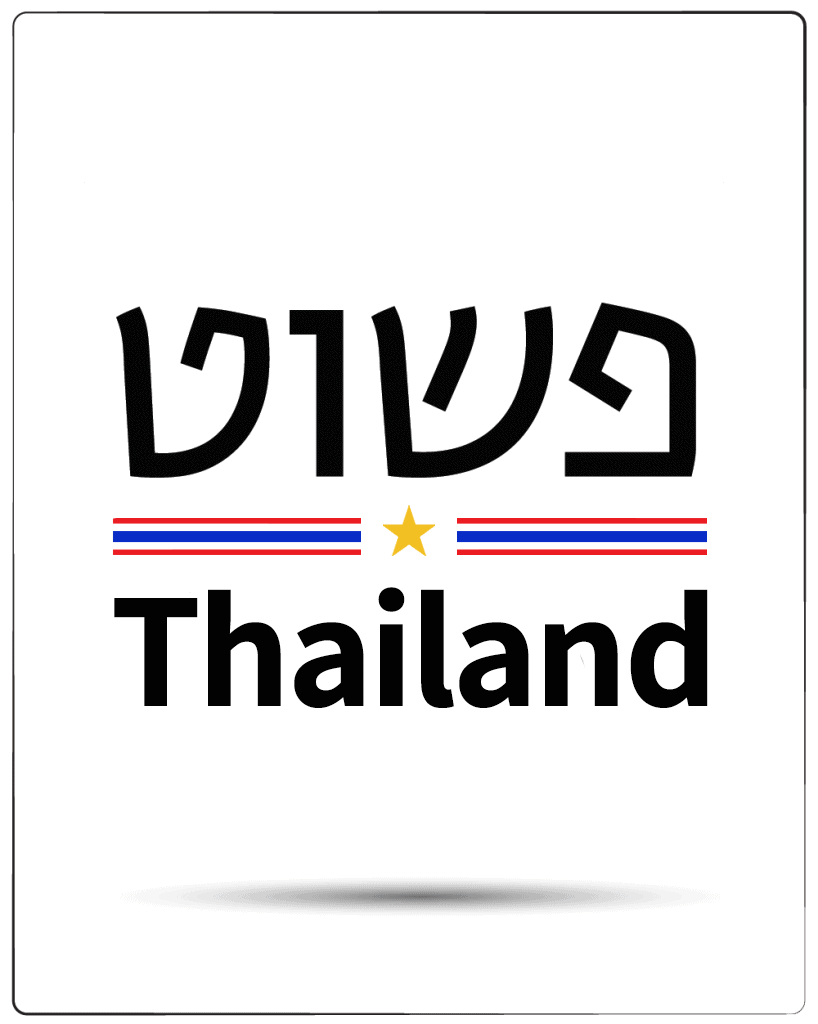Thailand is known as the ultimate vacation spot for those looking for a belly-back vacation Exotic beaches, a desirable destination for foot massage enthusiasts and an attraction for shopping addicts, but in addition to all of these it is also an attractive destination for connoisseurs looking for an authentic culinary experience and especially hot (literally).
Do you like spicy? Get ready for an exciting experience. Thai cuisine is known for combining strong flavors: spicy, sweet, salty and sour and is influenced by Chinese, Vietnamese, Malaysian and Indian cuisine. The ingredients, including the spices, will usually be fresh, for salting it is customary to use mainly fish sauce and in almost every dish the rice will be the star.
Main components
The most dominant component in Thai cuisine is rice - in starters, main dishes and even desserts, followed by the noodles. Next to or above these will be served fruits, vegetables, meat, fish and seafood which will usually be cooked in fish sauce and with plenty of fresh spices and what not - spicy.
Rice: Mainly "Jasmine" type rice. Similar to other Asian cuisines, this is the most important and common component and will be served boiled, steamed, stir-fried or sticky, both in main dishes and in a variety of desserts.
noodles: The main types of noodles used for cooking in Thai cuisine are rice noodles (of course) and bean noodles. These will appear in main dishes, soups and salads, often accompanied by spicy, sweet or sour seasoning.
coconut milk: The milk is produced by infusing coconut rounds in hot water and squeezing them, and is used as a central ingredient in both curry dishes and various desserts, mainly in the southern regions of the country where coconut trees are common.
Fella said: A fish sauce with a dominant taste and smell found in almost every traditional Thai dish. Despite its smell which may be unpleasant, during cooking or mixing with other ingredients it almost disappears. This is the main means of salting, but vegans can ask to replace it with soy sauce.
Freak said: A hot chili paste that changes its taste according to the different regions of the country and contains hot chili peppers, garlic and shrimps. It can be used as an ingredient in a dish or served alongside vegetables and rice.
Other ingredients and spices common in Thai cuisine: tamarind, kefir lime leaves, garlic, palm and coconut sugar, lemon grass, turmeric, Thai eggplant, coriander, curry, soy, oyster sauce and tapioca flour.
Some of these ingredients are not common or familiar in the western kitchen and some of them, despite the identical name, appear in a different form and taste than what we are familiar with.

Food by region
Since the ingredients are relatively repetitive, some tend to think that Thai cuisine is a homogenous cuisine. This is not necessarily true and in fact Thai food is influenced by the cuisines bordering the country and therefore the different regions in Thailand are characterized by different seasonings and slightly different ingredients from their neighboring regions. Northern Thailand slightly different from central Thailand and also in southern Thailand You can find different styles of food preparation, and other menus. Below is a table detailing the areas and the nature of the cuisine in them.
| Area | What can be found there? |
| Northern Thailand | In this part of the country, there is less use of coconut milk and more extensive use of fish sauce, lime and salt - so that in general the foods are saltier and the rice will be served stickier ("sticky rice"). Because of the distance from the sea, the main dishes will include beef and pork. |
| Central Thailand | The center of the country is an area full of rivers so that different types of food can be easily transported there and therefore the area is known for its culinary abundance which includes fruits, vegetables, fish, seafood and meat. |
| Southern Thailand | Unlike the north, in this part there is a lot of use of coconut milk since the coconut trees grow there in abundance and milk and oil can be extracted from them. Due to the proximity to the beaches, the cuisine in this area is rich in fish and seafood and there is also an influence from Malaysian food, so if we mentioned spicy - in these areas you should prepare in advance. |
Before going to taste - a few tips
- The golden advice is: don't ask what's in the dish, but taste it.
There are components that have a dominant smell (like fish sauce) that disappears when mixed with other components and there are components that are unfamiliar to us and we may dislike them unjustly. So if it is not about kosher considerations, diet or sensitivity to certain foods, it is recommended to simply taste and enjoy. - True, the cuisine is known for its unrefined spiciness, but that doesn't mean that those who aren't fans of the genre won't enjoy it. If you're really worried, ask for "mai pat" (loosely translated: not spicy) or "mai sai freak" (without chili).
- Spicy lovers? Don't be a hero. Start gradually. The Thai spicy is not known to Israelis and it is certainly possible that even if you ask for a "spicy" dish you will find that it is extremely spicy. Start slowly and increase the dose according to your tolerance.
- Most importantly - don't be fixated. Even if in Israel you ate a dish with a similar name (pad thai, banana loti) or used a spice that you thought was the same - apparently this is not the case. Don't give up on the popular dishes and try each one at least once.

Index of popular foods
As we said, Thai cuisine sometimes sounds homogenous because the popular flagship dishes will indeed repeat themselves on menus all over the country. However, the ratio of the ingredients can be slightly different and the seasoning. So that you don't get confused, here is a short list of foods that you are likely to find in most places, so that you can easily locate them on the restaurant menu.
Pad Thai): Rice noodles with fish sauce, tamarind or lime juice, peanuts and egg. You can add according to preference: tofu, chicken or seafood.
Rad Na (ראד page): A meat dish originating in China. Wide rice noodles with beef, pork, chicken or seafood.
Som Tam): Papaya salad with strong flavors of spicy, sour and sweet. The origin of the dish is in Laos and in addition to papaya it contains chili, garlic, lime, fish sauce, tomatoes and palm sugar.
Tom Yum): The most popular spicy-sour soup in Thai cuisine. These strong flavors are thanks to the seasoning with lime, chili and fish sauce and depending on your preference it will also include seafood, chicken or fish and sometimes coconut milk as well.
Red curry (spicy curry): It is actually a spicy curry dish similar to soup served with rice. The soup itself is based on coconut milk, red curry and fish sauce plus seasoning and meat (including chicken, pork and seafood) or tofu. For the vegans among us, it is important to note that the red curry spread in itself contains shrimp puree, so this dish is not vegan Even when it is served with tofu and this is different from other dishes based on fish sauce which can be replaced with soy sauce.
Curry Masaman): Another curry dish but this time in yellow-stain like the color of the curry spice. The dish draws flavors from Indian cuisine and is based on coconut milk, potatoes and meat or tofu.
Satay): Roasted chicken or pork served with peanut sauce alongside a cucumber salad. This dish is taken from Indonesian cuisine and is considered a popular fast food in Thailand.
desserts
Despite the use of coconut sugar and palm sugar, Thai cuisine is mainly not sweet and the main consumers of sweets are the tourists who visit the country. In the common desserts you can sometimes find ingredients that are less familiar to us in this context (such as rice, onions and beans) but as mentioned - it is better to taste than dwell on the list of ingredients, you will likely be pleasantly surprised and the long lines will testify to that.
Banana Lottie: Disruption of pronunciation of what is called in Thailand "Banana Roti". The dessert is taken from the Indian cuisine and contains a banana sliced inside a thin crepe fried on a hot plate and topped with chocolate syrup, caramel or condensed milk and various toppings.
Mango Sticky Rice: A combination of sticky rice, mango and sweet coconut cream, which may sound almost strange to us but the pleasure is guaranteed. This is one of the most favorite Thai desserts among tourists and locals.
In addition to these desserts, you can find plenty of fresh fruit that is sold at ridiculous prices and is a dessert in itself: pineapple, papaya, pataya, coconut, watermelon and more.

submission
Unlike Western cuisine where we usually eat a main course served alongside a side dish, in Thai cuisine the main course is usually rice or noodles served together with many side dishes (as described in the list above) and a selection of spices and sauces.
Although this is Asian cuisine, there is almost no use of chopsticks except for specific foods and most of the time the locals will also eat with a fork (which is usually held in the left hand) which is used to load the food into the spoon (which is in the right hand). However, despite the use of "modern" utensils, there are traditional foods that can be seen locals eating with their hands, for example Sticky Rice (sticky rice).
Where do you eat?
Restaurants
Wherever you travel, including isolated beaches, you will find at least one restaurant that will serve the local dishes, and in the more touristy places, it is likely that you will be able to easily find dishes from other cuisines - Chinese, Italian, and even restaurants that offer Mediterranean food. Generally, the more you stick to local food, the fresher ingredients you will get, but you can definitely find everything in Thailand without putting in much effort.
See here a list of recommended restaurants in Kosmoy.
Street food
In the markets and streets you will find many stalls offering traditional street food, stews, salads and desserts. This is an experience in itself and the flavors are also sometimes stronger and more surprising, but be sure to choose clean stalls with a high turnover of food (for example those with a long line). The bravest and those who like challenges will be able to try eating different insects and molluscs at these stalls.
See here the destruction of street food in Thailand.
kosher food
Due to the large number of Israelis visiting the country, there are many places that serve Israeli food, some of which is also kosher. The most popular options are restaurants that serve falafel, hummus, kebab or shawarma, which are usually close to the Israeli travel agencies. To avoid unpleasant situations, it is recommended to check the kosher of the meat as well as the freshness of the products.
Another and safer option is the Chabad houses, whose branches are scattered throughout the country and where you can enjoy a hot and kosher meal or purchase kosher food products. For those who want to cook by themselves, food can be purchased at the local supermarkets that sell products with the kosher OU seal (a circle with the letter U inside).
See here the list of Chabad houses in Thaild.
cooking classes
This is undoubtedly an attraction intended for tourists, but the fair price along with the educational experience make it worthwhile and fun for those who want to try the local cooking and also enjoy a delicious meal on the way.
The workshops are usually held in the larger and more touristic areas and last half a day. They begin with the selection of the dishes that each participant would like to prepare (usually 4 dishes) and a tour of the local market where the guide will purchase for you the raw materials that will be used later and explain the various components and the difference between them and what we know from Western cuisine. After that, the training will take place in the kitchen, where each participant or pair of participants will have their own station with cooking gas and essential utensils and it will be explained in detail how to prepare each dish.
At the end of the training, a festive meal will be held where each participant will eat the dishes he prepared, what comes out in the end Much Food, so they came with pants that have a button that can be opened.
Sample dishes that you are likely to prepare (and eat) in such a workshop: Tom Yum soup, Pad Thai, cashew chicken, banana loti.
cost - Usually 1,300-1,000 baht for a workshop that lasts about 4 hours and includes pickup from the hotel, instruction and all the raw materials.

